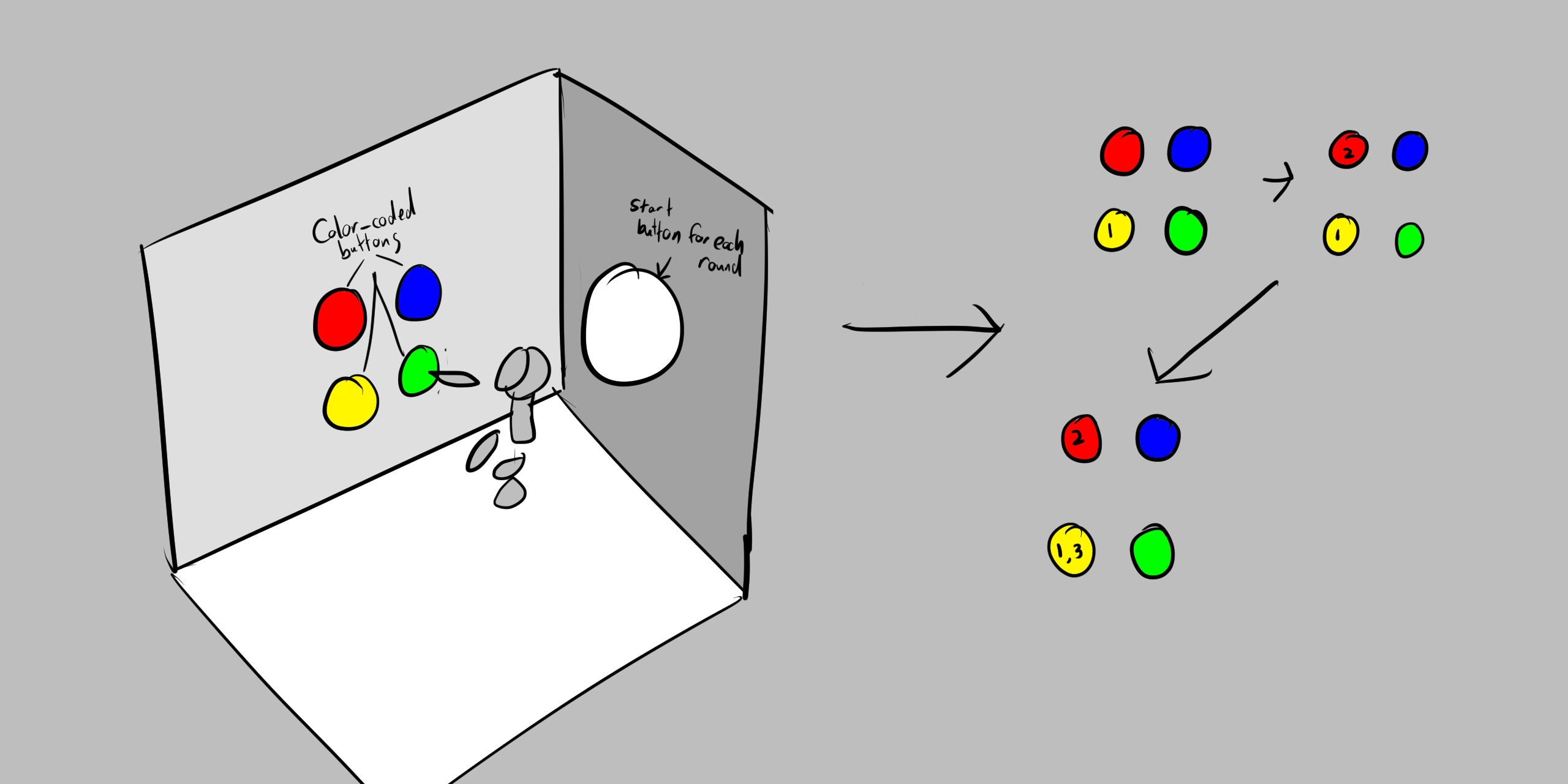VR/AR
A downloadable project for Android
Based on the electronic game Simon, the player is presented with a series of four coloured buttons that they must press in an ever-expanding sequence. The game is meant to help strengthen and test short-term memory, whilst also providing the player a form of entertainment.
Within the context of cognitive fitness testing and training, the application focuses on improving and testing memory. Memory tests have been proven to help increase memory retention, especially when paired with pattern training (Karpicke and Roediger III). Simon, as a game, incorporates both memory retention and pattern memorisation in its mechanics, creating an ever-expanding pattern that the player must match each time until they fail.
The benefits of having the program in a VR environment is the interactivity of the medium; general cognitive tests that take place on the computer have little to no interaction that doesn’t involve a few clicks on the mouse or typing into a textbox. This lack of immersion often leads to people growing bored with cognitive tests, as the more someone undertakes them, the start to seem less like "mental tests" and more like chores. As VR has a physical tracking component, it allows the player to be even more immersed in the application through their physical movements. This level of interaction even surpasses the interactivity of the original Simon game, as by restricting the player’s movements to just their hands and not their whole body, the original game suffers from the same attention-draining problems that are common among other cognitive fitness tests.
The main form of interaction that the player has in the application are pressing the start button, as well as pressing the four game buttons. Each button also flashes a different colour, as well as play back a different sound. There is also a sound that plays upon losing the game, as well as a scoreboard that updates upon each successive round.

As shown in this concept draft, the idea is to set the player in a closed-off environment with the main focus being placed on the buttons. On the right is a showcase of the different button patterns that can occur, and how the same button can appear in the sequence more than once.
The system works by creating a list that generates a random number than 0 and 3, corresponding to one of the four buttons. The player is then allowed to press a button, and if it matches, the list has another number between 0 and 3 added to the list, expanding it and making the player repeat more buttons in said expanding sequence. Should the player fail to repeat the sequence verbatim, a sound to indicate said failure is played, and the game must be restarted.
Whilst I also incorporated a scoring system as a minor addition, I also had ideas for “alternative modes” that the player could have selected, such as a “time attack” mode, where the player must complete a random sequence in a short period of time, or a mode that slowly speeds up the pace that the sequence of buttons light up. However, these ideas were scrapped, as I would have to program in a way to switch through each of the game modes seamlessly.

As the program would be minimalistic in design, I decided to put in the extra effort of designing my own buttons in Blender. These buttons each have a different colour to represent the four coloured buttons on a standard Simon game, whilst the start button is much larger and glows a brilliant white, drawing the user’s attention and visually indicating it should be pressed first without the usage of any unnecessary text. In addition, the buttons serve as a good visual indicator that they need to be pressed by the player. This is achievable in VR by the player literally pressing the buttons with their fingers, adding another layer of satisfaction to the gameplay.
References:
Karpicke, J, and Roediger III, H. (2006). The Power of Testing Memory: Basic Research and Implications for Educational Practice. Sage Journals. 1(3), p.1. [Online]. Available at: https://journals.sagepub.com/doi/10.1111/j.1745-6916.2006.00012.x [Accessed 21 August 2022].
Basic VR controls were retrieved from the VR tutorials created by Lindsay Wells.
| Status | Released |
| Category | Other |
| Platforms | Android |
| Author | HPockettUtas |
Download
Install instructions
To play the game, press the white button with your finger, and then press each button that lights up in order.